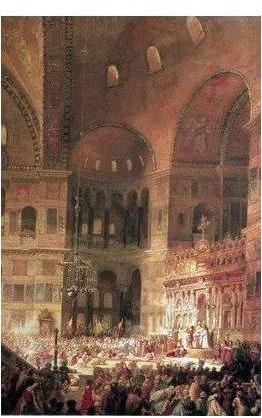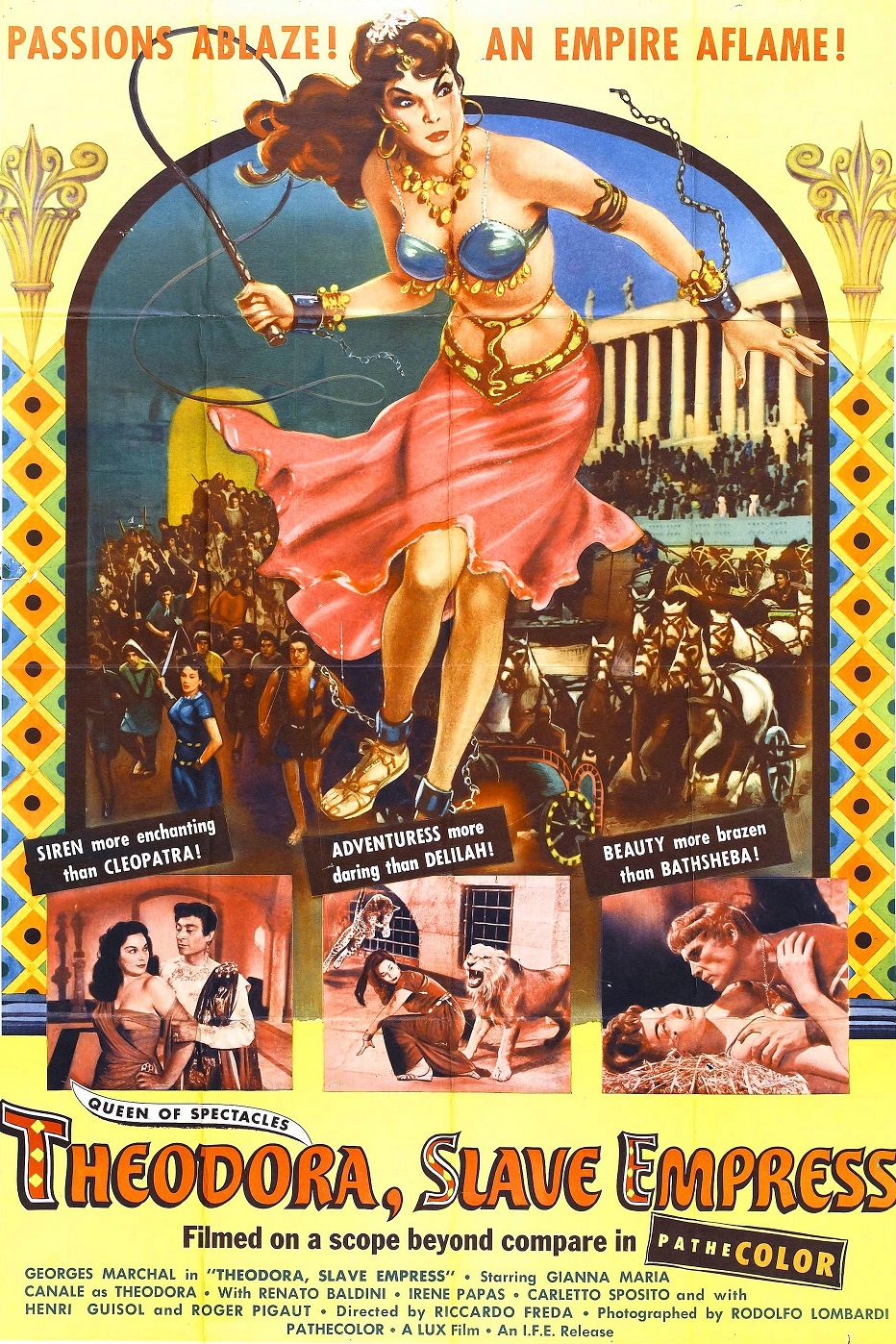The Eastern Roman Empire (476 - 1453 AD)
Updated on: 06 August 2023Reading time: 5 minutes
The legacy of the Roman Empire persisted in the East after the fall of the Western Roman Empire. The Eastern Roman Empire, also known as the Byzantine Empire, endured for nearly a millennium. While retaining Roman customs and traditions, it was deeply influenced by Greek culture.
In fact, the empire's citizens referred to it as the "Roman Empire": Βασιλεία Ῥωμαίων in ancient Greek, or simply "Rome" (Ῥωμανία). The Byzantine Empire stood as a formidable economic, cultural, and military power in Europe. Greek became the dominant language, though Latin remained the official administrative and military language until the reign of Emperor Heraclius (reign: 610-641 AD).
Emperor Zeno (reign: 474-491 AD)
In 480 AD, Zeno declared himself the sole ruler of the empire, ending its division between East and West. Yet, Odoacer effectively governed Italy. Subsequently, Zeno enlisted the Ostrogoths and their leader, Theodoric, based in Moesia (in the Balkans), to invade Italy and establish Theodoric as ruler. This strategic move aimed to oust Odoacer and distance the Ostrogoths from the heart of the empire. The defeat of Odoacer in 493 AD led to Theodoric's rule over Italy.
Emperor Anastasius I (491-518 AD)
Anastasius confronted the Isaurian War (492-497 AD), quelling a rebellion in Isauria. He reformed the empire's monetary system, assigning definitive weight to the follis, a copper coin widely used in daily transactions. Significant tax reforms included abolishing the chrysargyron tax (in Greek: χρυσάργυρον), also known as collatio lustralis in Latin—a tax on various trades, including prostitution—levied every four years in gold and silver. At his death, the state treasury held over 150 tons of gold!

Agia Sophia in 12th century |
Justin I (reign: 518–527 AD) and Justinian I (reign: 527–565 AD)
Justinian expanded territories into North Africa and Italy, including the reconquest of Rome. General Belisarius captured Ravenna in 540 AD, following victories in Naples and Rome, facilitating the conquest of Italy. However, the Byzantine Empire lost Rome again in 546 AD when the Ostrogoth king Totila recaptured the city.
In 535 AD, Justinian signed a 50-year peace treaty with Khosrau I of Persia, accompanied by a substantial annual tribute. The year also saw the Nika riots, a massive revolt in Constantinople, resulting in the execution of around 35,000 rioters. The riots led to the destruction of the city's main church, and the subsequent construction of the Agia Sophia church, also known as the Church of the Holy Wisdom.
Justinian also proscribed polytheism, refined and codified Roman law, and his rule witnessed several epidemics, including the Plague of Justinian, weakening the empire. Justinian's romantic involvement with Theodora, a woman of humble origins who influenced his decisions, also marked his reign.
Justin II (reign: 565 - 574 AD)
After Justinian's death in 565 AD, his successor, Justin II, resisted paying a substantial tribute to the Persians. Meanwhile, the Germanic Lombards invaded Italy, leaving only a fraction of the region under Byzantine control by the century's end.
Tiberius II (reign: 574 - 582 AD)
Following Justinian's passing, the Eastern Roman Empire lost a significant portion of the conquered Italian territories, retaining only Southern Italy and Sicily. Tiberius II, Justin's successor, opted to provide subsidies to the Avars while combating the Persians. Although General Maurice achieved successes on the eastern front, the subsidies proved ineffective against the Avars, who captured the Balkan fortress of Sirmium in 582 AD, alongside Slavic inroads across the Danube.
Maurice (reign: 582–602 AD)
Emperor Maurice expanded the empire's eastern holdings, yet his assassination in 602 AD ignited a 20-year war with the Sassanid Persia. The prolonged conflict drained resources and weakened the empire, rendering it vulnerable to the Islamic conquests of the seventh century.
Eastern Roman Empire in 600-1000 AD: : Loss and Reconquest of Territories
During the seventh century, the Arabs conquered southern Italy and Sicily. The Eastern Roman Empire engaged in numerous conflicts against the rapidly expanding Islamic forces, losing territories in Syria, Armenia, and Egypt. In the Balkans, invasions by Slavic groups posed another threat.The eighth and ninth centuries witnessed the Byzantine Empire's reclamation of some eastern territories. By 1000 AD, Emperor Basileios II had recaptured Armenia and Bulgaria. Thriving trade, culture, and economy defined this period.
1071-1453 AD: The Four Crusades and the Ottoman Conquest of Constantinople
The defeat of Byzantine forces at the Battle of Manzikert in 1071 AD signaled the empire's decline. Struggling with internal strife and Turkic invasions, Emperor Alexius I Commenus sought aid from Western European kingdoms, leading to the Crusades and the eventual Sack of Constantinople during the Fourth Crusade.In 1204 AD, Constantinople fell, resulting in the fragmentation of the empire into Latin and Byzantine successor states. Although Constantinople was recaptured in 1261 AD, it remained a small Greek state on the Aegean coast, while the Ottomans gradually annexed other territories. The final blow came in 1453 AD, when Ottoman forces under Mehmed II seized Constantinople, marking the end of the Eastern Roman Empire. The remnants of the once-mighty empire faded into history, with the modern Greek state emerging much later in 1821.
SOURCES
- Warfare, State And Society In The Byzantine World 565-1204 (J. Haldon, Routledge 1st edition, 1999)
- The Byzantines (A. Cameron, Wiley-Blackwell 1st edition, 2006)
- Theodosius: The Empire at Bay (S. Williams, G. Friell, Yale University Press, 1995)
- Byzantium and The Crusades 2nd edition (J. Harris, Bloomsbury Academic 2nd edition, 2014)
- Economic Expansion in the Byzantine Empire, 900-1200 (A. Harvey, Cambridge University Press, 2003)
